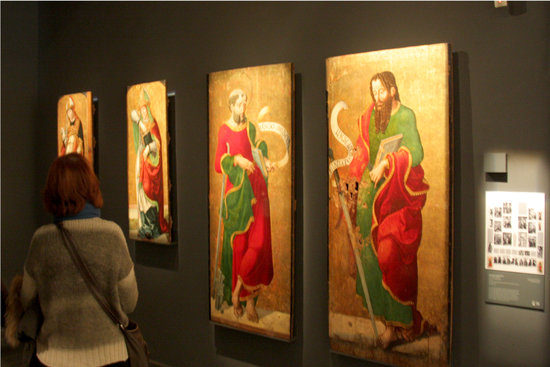Disputed artworks to remain in Aragon following Supreme Court decision
The sale of 96 pieces of art originally from the Sixena monastery to the Catalan government was ruled null and void

The disputed artworks originally from the Sixena monastery in the region of Aragon will not return to Catalonia following a Supreme Court ruling on an appeal.
The historic Sixena works of art have long been the subject of a legal battle between Catalonia and Aragon over where they should be placed and displayed.
The Supreme Court rejected the appeals of the Catalan government, the National Art Museum of Catalonia, and the Consortium of the Museum of Lleida against the ruling of a provisional court in Huesca, Aragon, which declared the prior sale of the 96 Sixena works as null and void.
Catalan authorities have lamented the ruling as a “serious precedent” for the art world, while Aragon officials say they hope the suit regarding other disputed murals in Catalonia's National Art Museum (MNAC) follows the same path.
The works were purchased by the Catalan government during the 1990s, however, the courts have now ruled that the seller of the 96 pieces of art was not the legitimate owner of them and therefore didn’t have the competence to sell them.
The owner of the works, according to the Supreme Court ruling, was the Royal Order of the Monastery of San Juan de Jerusalem de Sixena, whereas the party that acted as the seller that has now been nullified was the Royal Order of the Monastery of San Juan de Jerusalem de Valldoreix. The court declared that these are two “different” religious entities that constituted their own “independent legal personalities.”
In a separate court decision, a local court in Huesca declared that a further 111 pieces in the Lleida Museum’s possession have been ordered to be returned to churches in various Aragonese towns nearing the border with Catalonia. The court said that these works are to be returned by February 15.
All of the disputed artworks are pending appeal.
History of the artworks
Disputes over the rightful ownership of the works had been going on for years between Aragon and Catalonia. In
The artworks are part of a larger collection of more than a thousand items removed from the Sixena monastery during the Civil War and taken to Catalonia. They were taken during the early days of the conflict when monasteries and other Catholic buildings where being destroyed, in order to be protected.
In the 90s, the Catalan government formally purchased them. After years of complaints, Spanish judges ordered that the artworks be returned in 2016, declaring the sale void. While the Catalan authorities gave back some smaller pieces, they decided that some artworks must stay in Lleida due to their fragility.
2017 return to Aragon
When the Spanish government declared direct rule over Catalonia in October 2017 following the independence push, Catalan institutions involved in the battle over the ownership of the Sixena artworks were put in a much weaker position.
In December of that same year, a judge gave permission to Spanish Guardia Civil police agents to enter and use force, if necessary, to enter the Lleida Museum and reclaim the disputed artworks.
Spanish police officers and Aragonese officials then did so on midnight, December 11, and removed 44 contested pieces of art to bring them back to Aragon.